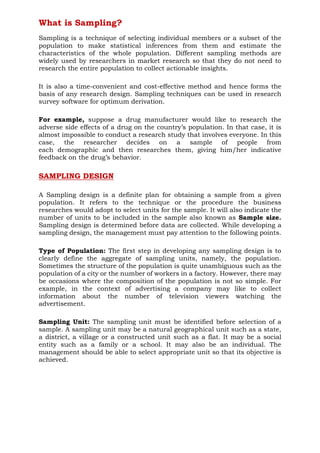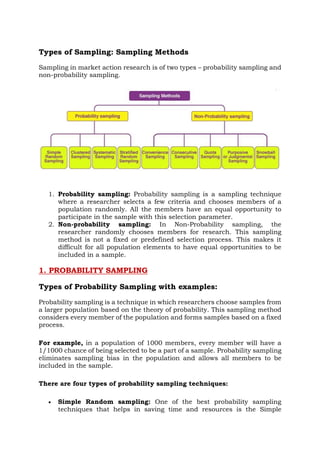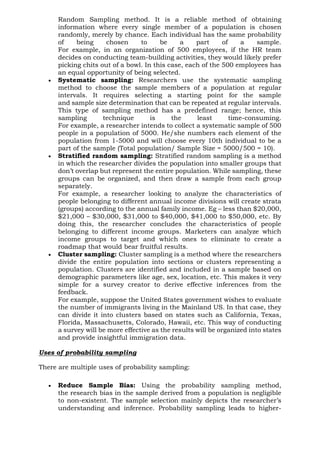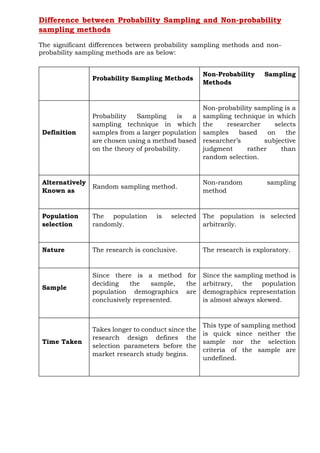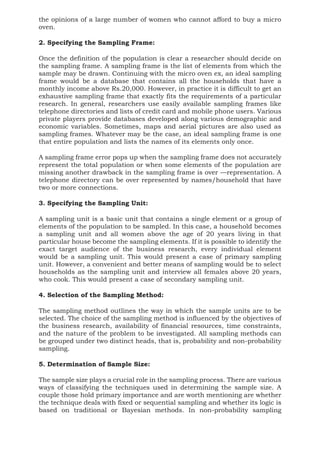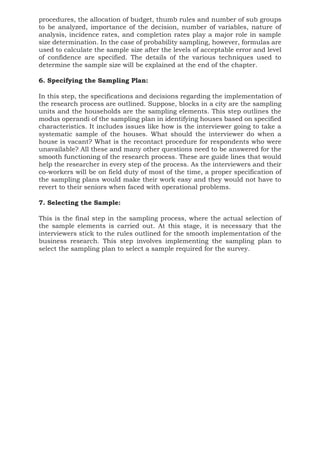Sampling is a technique used to select a subset of individuals from a population to make statistical inferences, saving time and cost while enabling actionable insights. The document discusses different sampling methods, including probability sampling (random selection) and non-probability sampling (subjective selection), detailing specific techniques such as simple random, systematic, stratified, and cluster sampling. Additionally, it outlines the steps involved in the sampling process, including defining the population, selecting the sampling method, determining sample size, and selecting the sample.
